Yucca Garden Ideas: Creative Ways to Beautify Your Yard
If you’re looking to add a unique touch to your garden, considering yucca plants might be a great idea. These hardy, low-maintenance plants can thrive in various conditions and add a striking element to your landscape.
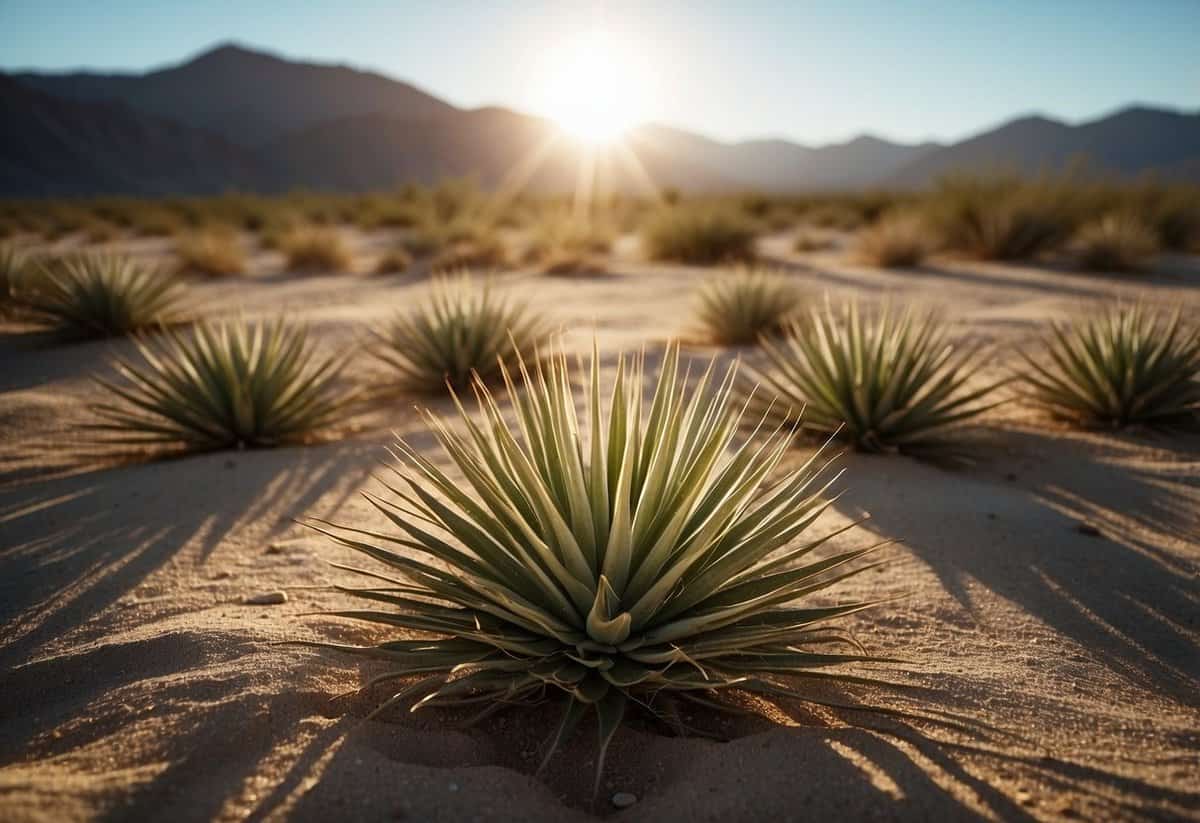
What makes yuccas special is their ability to blend with different types of plants. Pairing them with colorful, water-wise species or arranging them in containers can create an eye-catching design. Explore various yucca garden ideas to enhance the beauty and functionality of your outdoor space.
1) Plant Yucca rostrata for an Eye-Catching Focal Point
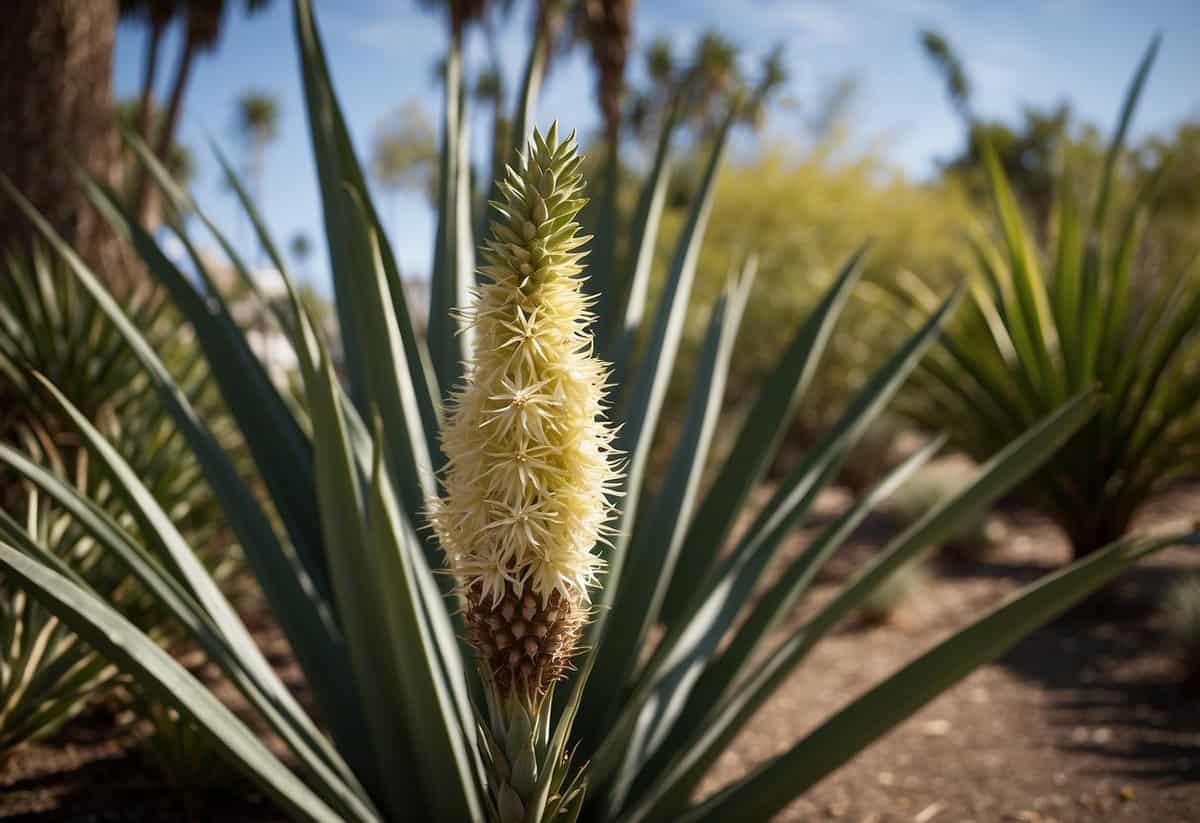
Yucca rostrata is a stunning choice for creating a focal point in your garden. Its sharp-tipped, pale bluish-green leaves form a perfect, symmetrical rosette.
With a trunk covered in soft gray fibers from old leaves, it creates a striking silver haze. This plant thrives in full sun and is drought-tolerant.
Consider placing it in a large container or a xeriscaped garden. For more about growing this plant, check here.
2) Try a Staggered Arrangement of Different Yucca Species

Staggered arrangements can make your garden look more dynamic and interesting. You can choose different types of yucca like Yucca gloriosa, which is a tall and dramatic plant, and Yucca aloifolia, known for its spiky leaves.
Place taller yuccas in the back and shorter ones in the front for a tiered effect. This setup not only adds depth but also showcases each plant’s unique characteristics.
3) Use Yucca filamentosa as a border plant

Yucca filamentosa, also known as Adam’s Needle, is perfect for creating striking borders in your garden. Its sharp, sword-like leaves provide a unique texture and structure to your landscape.
These plants are hardy and can thrive in various environments, making them an excellent choice for city gardens or coastal gardens. Their drought and salt tolerance ensure they stay vibrant even in challenging conditions.
To enhance visual interest, place yuccas along walkways or garden beds, where their bold foliage will stand out. If you want a low-maintenance, eye-catching border, Yucca filamentosa is an ideal option.
4) Highlight Yucca gloriosa with nighttime lighting
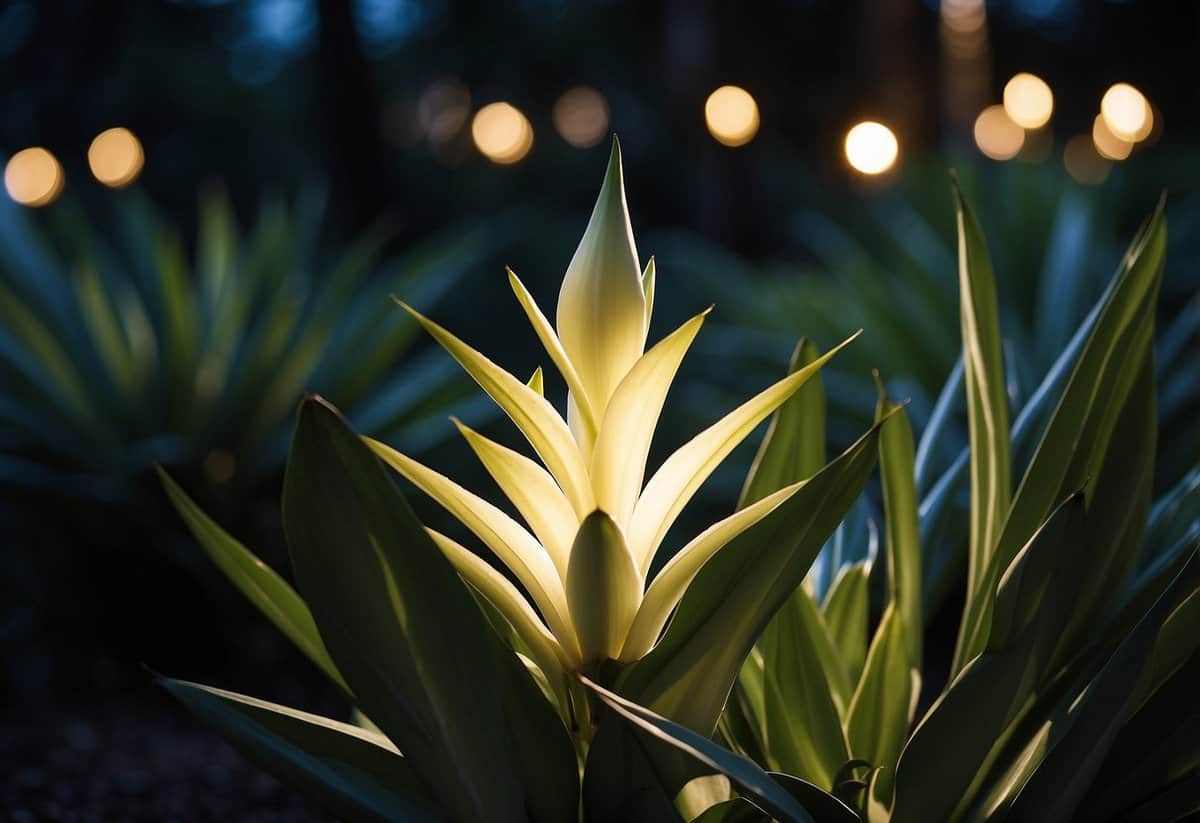
You can make your Yucca gloriosa stand out with some creative nighttime lighting. Place soft, warm lights around the base to cast gentle shadows on the leaves. This adds drama and highlights the unique shapes of the plant. Solar-powered spotlights are a great option to keep everything eco-friendly.
Enjoy a beautiful and cozy garden view even after the sun goes down.
5) Create a minimalist garden with Yucca elata and gravel

Yucca elata, with its tall, elegant stalks and slender leaves, fits perfectly in minimalist garden designs.
Start by spacing out Yucca elata evenly. This gives each plant room to grow without overcrowding.
Cover the ground with gravel. It suppresses weeds and maintains a clean look. Plus, it highlights the structure of Yucca elata beautifully.
Use different sizes of gravel to add a touch of variety while keeping the minimalist theme intact. Arrange the gravel around the base of each yucca to keep the focus on the plants.
6) Combine Yucca with Drought-Tolerant Grasses

Yucca plants look great when paired with drought-tolerant grasses. Grasses such as blue fescue or feather reed grass add texture and movement to your garden.
These grasses need little water and thrive in dry conditions, making them perfect companions for yuccas.
Mixing yuccas with these grasses creates a stunning, low-maintenance landscape. The combination also enhances the natural beauty of your garden while keeping water use minimal.
7) Use Yucca aloifolia for a dramatic vertical accent
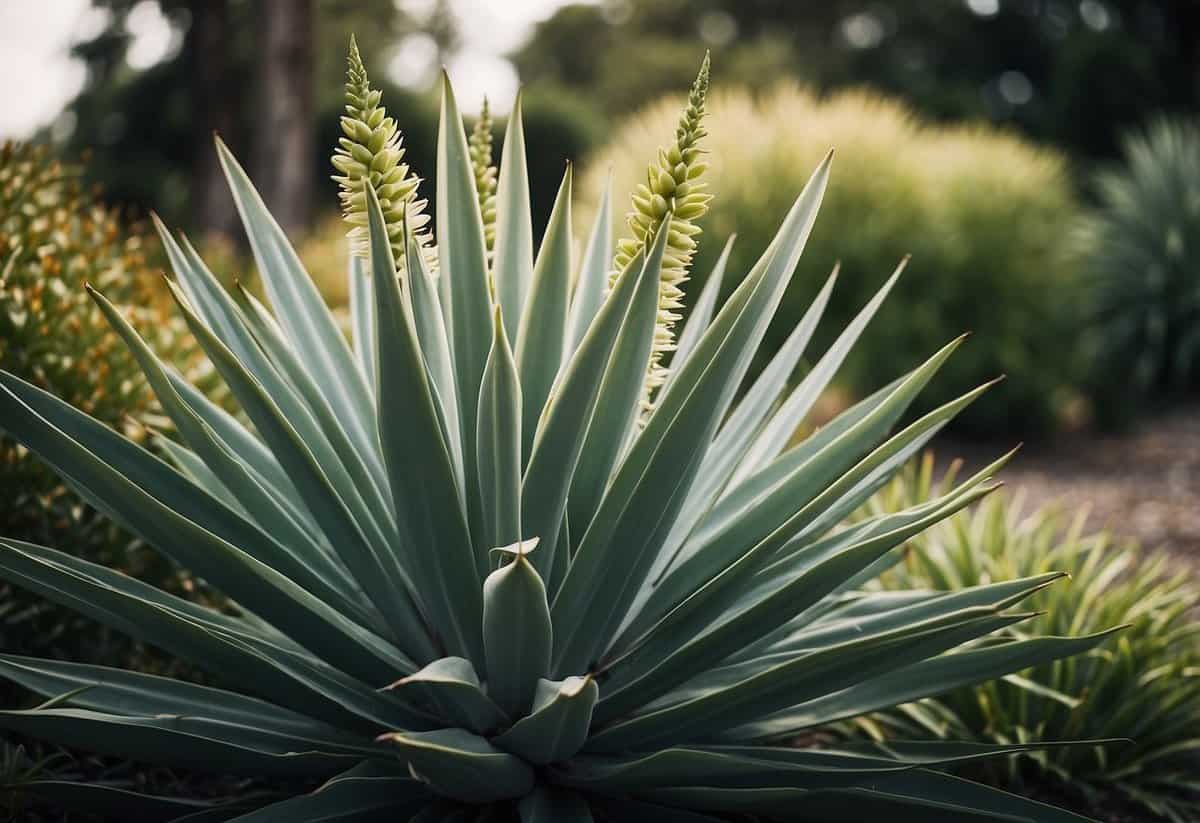
Yucca aloifolia is perfect for adding a bold touch to your garden. Its sword-shaped, deep green leaves create a striking look.
Place it in a sunny spot where its tall flower spikes will stand out. The sharp, pointed foliage adds a unique texture that complements other plants.
Yucca aloifolia attracts butterflies with its fragrant blossoms, making your garden lively and beautiful.
8) Incorporate Yucca into a Rock Garden for Texture
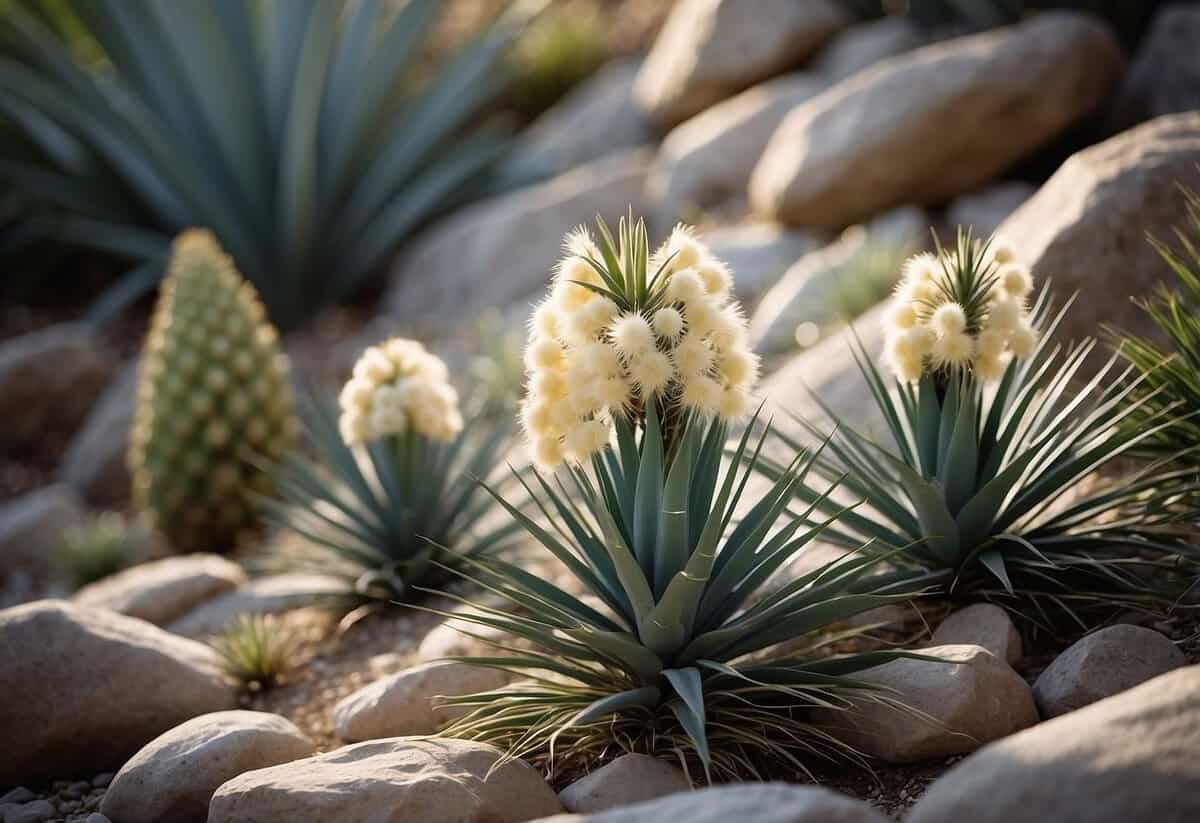
Yucca plants add great texture to rock gardens. Their spiky leaves contrast nicely with the smooth surfaces of rocks.
Try placing different types of yucca like the mountain yucca, which can grow quite tall. This creates visual interest.
Yucca also pairs well with other rock garden plants. For example, Echeveria agavoides makes a good companion plant, adding softness to the rugged scene.
9) Plant Yucca baccata around garden seating areas.
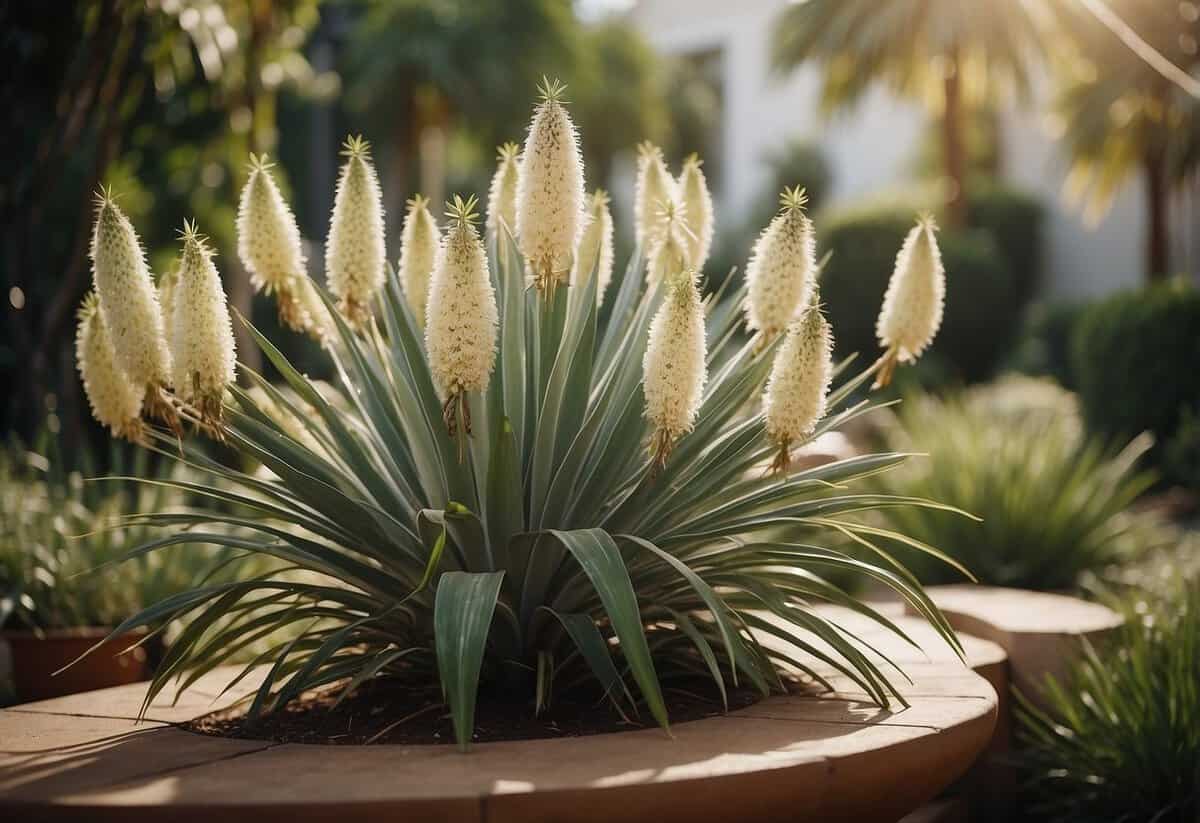
Yucca baccata, also known as banana yucca, adds a striking look to your garden seating areas.
These plants have beautiful blue-green leaves and white flowers with a hint of purple. They grow about 2 to 3 feet tall and can spread up to 10 feet wide. Perfect for filling spaces around benches or seats.
Since they thrive in full sun, placing them in sunny spots will help them flourish. Plus, their unique appearance will make your seating areas pop. For more details, you can visit Garden Design’s guide.
Adding Yucca baccata ensures your garden seating spots not only feel inviting but also look fantastic.
10) Use colorful yucca varieties like ‘Color Guard’

‘Color Guard’ yucca is a great addition to your garden. It has bright yellow stripes in the middle of its green leaves, making it stand out.
This plant also shows pink and rose hues in the winter, adding even more color. You can find planting tips for ‘Color Guard’ on Southern Living Plants.
‘Color Guard’ can thrive in full sun to part shade, so it’s versatile for many garden spots.
Choosing the Right Yucca Plants
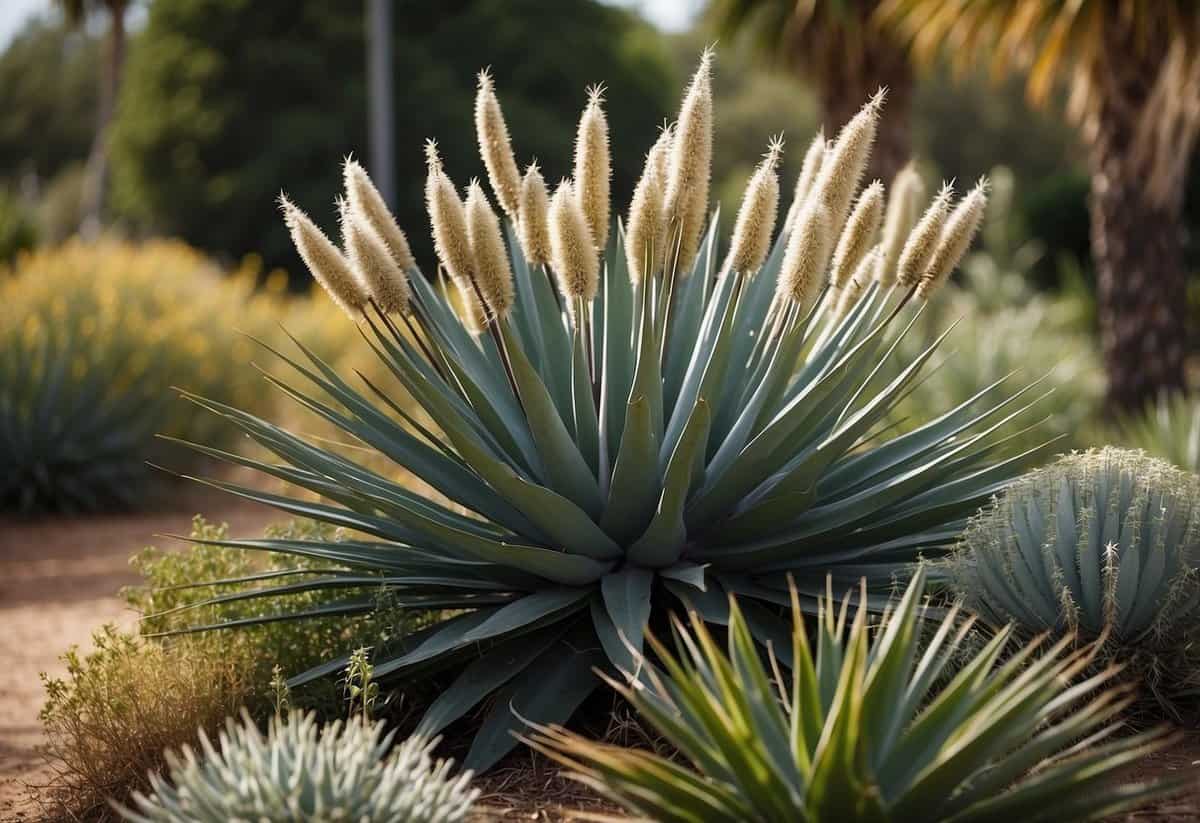
Choosing the right yucca plants involves understanding popular varieties, considering various factors, and ensuring climate compatibility. Each aspect plays a crucial role in the success of your garden.
Popular Yucca Varieties
When choosing yucca plants, start by knowing which varieties suit your landscape. Adam’s Needle (Yucca filamentosa) is popular due to its striking white flowers and sharp, pointy leaves. It grows well in many regions.
Spanish Dagger (Yucca gloriosa) has sword-like leaves and blooms in summer. It’s ideal for coastal areas.
Another favorite is the Joshua Tree (Yucca brevifolia), known for its unique, branching structure. This variety thrives in desert climates.
Consider the Red Yucca (Hesperaloe parviflora) too. Despite its name, it’s not a true yucca but offers similar drought tolerance and red flowers.
Factors to Consider
Several factors impact the choice of yucca plants. Soil type is important; most yuccas prefer sandy, well-drained soil. Ensure your garden has the right soil conditions.
Space is another key consideration. Some yuccas grow tall, like the Joshua Tree, reaching up to 30 feet, while others remain compact, such as the dwarf Y. harrimaniae x nana.
Also, think about water needs. Yuccas are drought-tolerant, which means they require minimal watering. This makes them ideal for xeriscaping or low-water gardens.
Sunlight is crucial too. Most yuccas need full sun, so they’re best planted in open areas where they get plenty of light.
Climate Compatibility
Yuccas thrive in various climates, but matching the right species to your region is crucial. In cooler zones (6-7), choose hardier types like Adam’s Needle. This variety tolerates some frost and cold.
For hotter, arid climates (zones 8-10), go for species like the Joshua Tree or Spanish Dagger. These plants handle high temperatures and dry conditions well.
If you live in a coastal area, Spanish Dagger is a good option. Its tolerance to salt and wind makes it perfect for seaside gardens.
Matching your yuccas to your climate ensures they thrive and add beauty to your landscape.
Designing Your Yucca Garden

Combining yucca plants with the right partners and thoughtful layout can create a striking, low-maintenance garden. Consider the setting, plant companions, and even balcony spaces.
Complementary Plants
Pairing yuccas with the right plants enhances their beauty and health. Good companions include Sage, Yarrow, and Sedum. These plants share similar water and sunlight requirements, making them ideal partners.
Snake Plant, Rudbeckia, and Tiger Lilies also work well, as they thrive in similar conditions. Using a mix of these plants will create a diverse, visually appealing garden.
Incorporate succulents and drought-tolerant perennials to add texture and color. Herbs like rosemary and lavender can bring variety and scent to your garden space.
Garden Layout Ideas
When planning your garden layout, consider placing dwarf varieties like Yucca harrimaniae x nana at the front. This adds depth and structure, making the garden look well-organized.
For midsection layers, use varieties like Adam’s Needle (Yucca filamentosa). These mid-sized plants provide height and a focal point.
If you have more space, create clusters with different yucca types to make a bold statement. This maintains a cohesive look without overcrowding.
Paths lined with yucca plants and companions create a neat, natural feel. Raised garden beds can also be effective, offering better drainage and adding an extra design element.
Incorporating Yucca in Balcony Gardens
Yucca plants can thrive on balconies, too. Choose compact varieties like Yucca desmetiana for smaller spaces.
Use pots and containers that match your balcony’s aesthetic. Make sure the containers have good drainage to prevent waterlogging.
Mix yucca with other container-friendly plants like succulents and herbs for a vibrant, easy-to-maintain balcony garden.
Balcony gardens can benefit from vertical space, so consider using hanging planters or shelves. This maximizes your gardening area and keeps your space organized.
Remember to adjust your care routine for smaller spaces. Regular, but not excessive, watering and ensuring ample sunlight are key to maintaining a thriving balcony garden.







